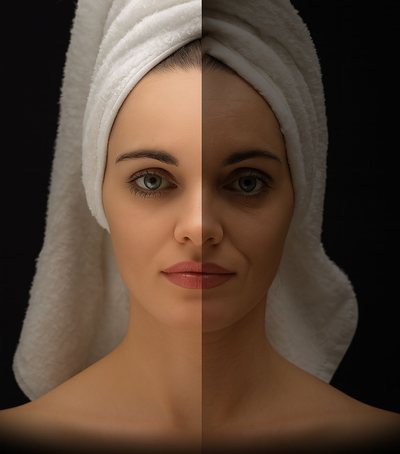
Smart fashion is transforming the way we interact with ourselves and the environment around us, bringing clothing that has the ability to measure and analyze our physical and emotional parameters. At the center of this revolution are textiles with integrated sensors, which, connected to small microprocessors and mobile applications, record key components of our health in real time.
One of the most popular examples is T-shirts that measure heart rate and variability. These sensitive textiles contain delicate electrodes embedded within the fibers, which capture the heart's electrical signals without the need for external components. In addition to providing information on heart rate, some models also analyze breathing rate and body position, providing a complete picture of physical performance and relaxation state during the day or exercise.
Beyond measuring heart rate, the new smart jackets come with sensors that monitor stress levels by analyzing changes in sweat and skin resistance. When anxiety levels rise, the devices alert the user with a vibrating alert or an app notification, offering recommendations to practice a short breathing technique or take a short break. This proactive approach allows us to intervene immediately to avoid chronic stress buildup and maintain emotional well-being.
The latest smart textiles are also capable of measuring metabolic and blood parameters. For example, there are socks and pants equipped with temperature and glucose concentration sensors that communicate securely with an app, helping people with diabetes manage their sugar levels without frequent finger pricks. This initiative not only improves quality of life, but also gives users a sense of independence and security, enabling rapid intervention when parameters fall outside normal ranges.
To maximize the benefits of these innovations, many brands now offer advanced data analysis platforms, where users can create health profiles, track their parameters trends, and share reports with their doctor or personal trainer. The artificial intelligence embedded in these systems learns from individual habits and changes, suggesting activity routines, more appropriate meals, or rest times based on personal patterns.
More ambitious developments are on the horizon, such as textiles that change color to reflect blood oxygen levels, or clothing with haptic capabilities that provide gentle stimulation to correct posture. Furthermore, the integration of self-healing materials and energy networks embedded within fibers promises a new generation of clothing that will last longer and offer advanced functions without interruption.
Smart fashion is not just a technological trend, but an important step towards a deeper relationship with our bodies and minds. Through clothing that measures health and emotions, we can take conscious action on our well-being, prevent health problems, and create daily habits that keep us fit and calm. In this way, every day becomes an opportunity to improve ourselves with the help of technology integrated elegantly and functionally into our daily lives.
Photo Credit (Free Download):
https://www.pexels.com/photo/woman-in-black-blazer-smiling-6702738/





